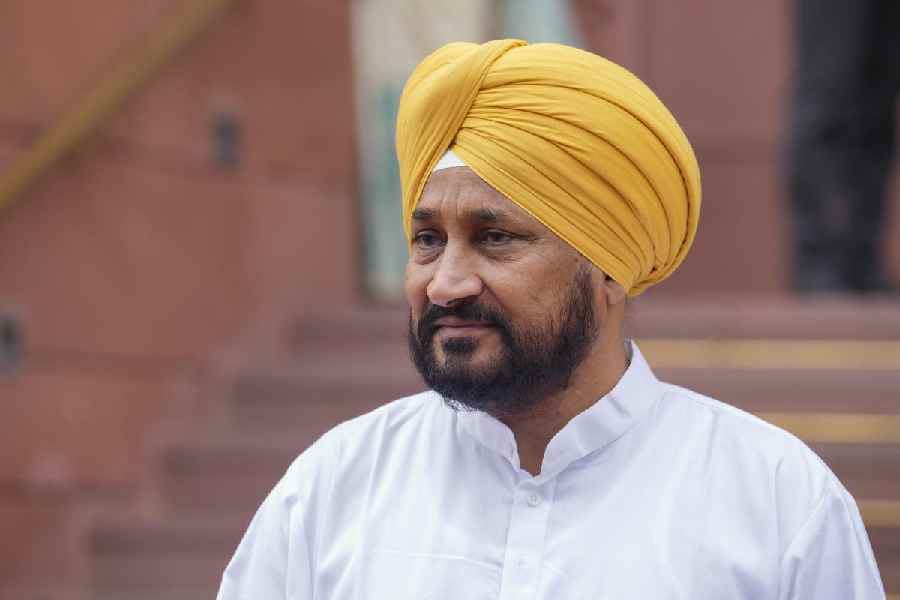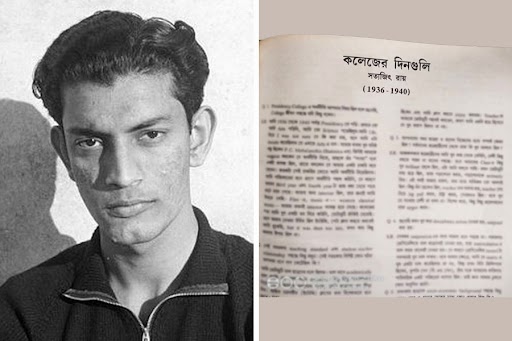 |
| CURTAIN RAISER: Child artistes get ready to take the stage |
I keep picturing all these little children playing some game in this big field of rye…Thousands of little kids, and nobody’s around...except me. And I’m standing on the edge of some crazy cliff…I have to catch everybody if they start to go over the cliff…I’d be the catcher in the rye...
— Holden Caulfield in J.D. Salinger’s The Catcher in the Rye
There’s something about what Nandikar director Rudraprasad Sengupta says that reminds you of Holden Caulfield. J.D. Salinger’s protagonist wanted to catch the children young, before they fell off the edge — the symbolic edge of innocence. Ask Sengupta why Nandikar, known for its powerful social drama, is suddenly focusing on children’s plays and he admits that it is not just about addressing the need for more quality entertainment for children.
There is also a deep feeling that too many children are falling off the edge. “It doesn’t come as news to anyone that today’s children have lost their childhood,” Sengupta says. “They are saddled with academics. They are taught to be competitive in a cut-throat consumerist world. Their family support systems are crumbling. They have neither time nor space to play. Everyone knows about it. Everyone talks about it. But no one does anything about it. I want to change that through theatre.”
Indeed while Nandikar has been engaged since 1989 in the production and performance of “theatre for children and by children,” there is no denying that in recent years this endeavour has blossomed into what Sengupta calls a virtual “movement”. In a single day in October this year, it staged three children’s plays consecutively at the Academy of Fine Arts auditorium in Calcutta. Every Sunday Nandikar holds theatre workshops for children at their office on Acharya Prafulla Chandra Road in north Calcutta, where clearly imparting histrionic skills such as acting, singing or dancing is not the only aim.
The training is as much about inculcating values, such as teaching them to be compassionate. “Your mother told me this morning that you are quite a fussy eater, Ankit,” Sengupta calls out to a little boy in a class. “Why don’t you ask her tomorrow what she likes to eat and try and organise it for her?”
And it is also about injecting some drollery into what is otherwise — as one parent calls it — a “dreary” life. Her daughter, Amrapali Bhattacharya, a class VII student of Holy Child Institute, is rolling on the floor of a big hall, trying to see things from the perspective of a rock. She says, getting up, “On school days we have no time to play because of homework. I look forward to Sunday because I have so much fun here.”
Says Sengupta, “The movement is about helping children shed the shackles imposed on them by society. If you see an increase in the number of productions for children it is an indication of this movement taking place.”
The number has certainly gone up. Consider the figures. In less than two years, Rama Prasad Banik has directed two plays — Jodio Sandhya and Chhut — which deal with children’s themes. Saonli Mitra’s Pancham Vaidic forayed into the genre of children’s theatre with the works of two of the most popular authors of 20th century Bengali children’s literature — Sukumar Ray’s Hajabarala and Lila Majumder’s Lanka Dahan Pala — at the Academy of Fine Arts.
Ganakrishti, which recently concluded its annual theatre festival, earmarked an entire slot for children’s plays. Even Shopno Shondhani, which earlier never ventured into the area of children’s theatre, staged two full-length children’s plays — Bhalo Rakhosher Golpo and Banku Babur Bandhu — in a span of less than two years. And the reason, again, has less to do with meeting a dearth of quality children’s productions than with other issues.
Explains director Kaushik Sen, “Compared to earlier generations, I think today’s children are much more lonely. Competitive environments teach them to be self-centred. Many of them don’t have siblings and often their only playmates are computer games. If their parents enrol them in extra-curricular activities, it is frequently to learn to play an instrument — like the sitar — which is a solitary activity. Theatre, on the other hand, is a group activity, which enables a child to develop his skills of working in a team. As theatre people it is our responsibility to try and alleviate the problem of alienation faced by children today.”
Sen too holds regular theatre workshops for children — every Saturday at South Point School — and says “it is not only a successful venture in terms of interest and enthusiasm (currently 115 children are enrolled there), but it is proving to be highly therapeutic.” He mentions a girl who was admitted to the training programme by her parents who considered the child to be “abnormally reticent”. After a few sessions, which included developing communication skills, “she has become quite social,” says Sen.
Not that children’s theatre didn’t exist before. On the contrary, it was an integral part of the celebrated theatre tradition of Bengal, with production houses digging into the rich treasure of Bengali children’s literature for inspiration. There have been individual efforts of groups such as Pinaki Guha’s Chetla Krishi Sangsad, which according to Kaushik Sen “should be recognised for their continued endeavour to keep alive children’s stories through theatre”. Annual children’s festivals have been organised by myriad groups such as Indian Mime Theatre and puppet shows of Children’s Little Theatre have entertained generations of young Calcuttans.
But as a veteran theatre critic points out, “Currently there is a renewed interest in children’s theatre with a sizeable number of groups trying to usher in a sort of revival after a relative lull in the genre.”
And as the curtains go up on these, there may just be fewer falls from the cliffs beyond the fields of rye.











